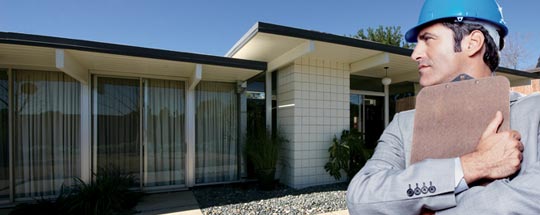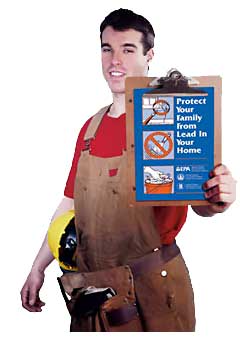Lead-Safe: At What Cost?

If you're planning to remodel your mid-century modern home, better hang onto your hat first, and then your wallet and your patience. Big changes are here.
New nationwide lead-safe rules by the U.S. Environmental Protection Agency are mandating that professional home-improvement contractors change the way they perform work on all homes built before 1978, and that move in turn is expected to impact homeowners like you and the prices you pay for home improvement.
Through its 'Renovation, Repair and Painting' (RRP) rule, which went into effect in April 2010, the federal agency wants homeowners and the contractors they hire to take the potential for lead poisoning very seriously. Contractors and some of their employees are now required to undertake lead-safe training and become EPA-certified, conduct lead-safe practices on the job, and properly inform their clients along the way.
The new RRP rule, according to the EPA, does not apply to minor maintenance or repair activities when less than six square feet of lead-based paint is disturbed in a room or less then 20 square feet on the exterior.
The RRP impacts many home-improvement trades, including general contractors, painters, plumbers, electricians, window installers, HVAC companies, siding and paneling installers, and others.
"The downside for Eichler owners [and other mid-century modern homeowners] is that this rule affects virtually every project they do," says Lou Palladino, owner of Palladino Painting, an Eichler-focused painting contractor on the San Francisco peninsula.
Contractors are worried about what the RRP means for them: changes in daily work practices, added operating costs due to compliance, concerns over their ability to compete in the workplace as costs climb, concerns that EPA rules may discourage homeowners from initiating projects, and fear of the looming threat of hefty fines.

Not complying with the new law can be costly. Fines for violating contractors under the new rule may be levied as high as $37,500 per day. And for homeowners who hire contractors who are not EPA-certified, will such moves open the door to litigation by affected neighbors, or upon re-sale?
There are significant costs for contractors who comply, too. The EPA charges $300 for each company and $225 for each employee to get trained and certified. Palladino paid for himself and five employees. "It's an investment, but a necessary one," he says.
Then there's the materials equipment needed for the job, all of which are meant to contain the potential for lead poisoning and block off the work area from the rest of the home.
"No longer can other painting contractors out there go about sanding and scraping mindlessly," Palladino says. "Even our own performance has been boosted to a higher level, now that we have put our guys through training and follow the EPA's protocol, which is a completely debris-free process."
Contractors must purchase heavy-duty plastic sheeting; masking, duct, or painter's tape; cones; signs; and barrier tape, rope, or fencing. To protect themselves and their workers, they must also buy disposable coveralls, protective eyewear, hats, disposable gloves and shoe covers, and a disposable respirator. Special equipment is also necessary and includes a high-efficiency particulate air (HEPA) vacuum cleaner, which can run anywhere from $500 to $2,000; wet-dry sandpaper; tack pads; and chemical strippers. Other power tools must have HEPA-filter equipment attached.
Contractors say implementing all these tools and materials makes it more complicated to schedule projects. Each interior area that is worked on must be cordoned off with plastic sheeting that extends a minimum of six feet in all directions from the location where paint will be disturbed. Homeowners and pets must be prevented from entering the work area, so projects must be carefully planned so that only sections of an occupied home are being worked on at any one time.
"There's no doubt it adds time to the project across the board," Palladino says. "The more furniture and things people have, the more everything has to be sealed and isolated."
The same rules apply outdoors, which can be a challenge when a yard is heavily landscaped up close to the house.





